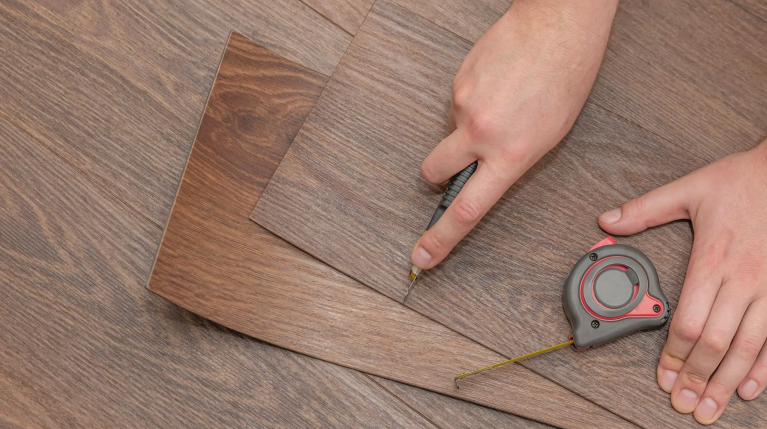

SPC, also known as Stone Plastic Composite or Stone Polymer Composite, is a remarkable flooring material crafted through cutting-edge techniques. It comprises four layers, each contributing to its exceptional durability. These layers include the top wear layer, a printed vinyl layer, a rigid core, and the final backing layer. The top two layers function similarly to traditional vinyl flooring, offering both aesthetic appeal and practicality. The protective wear layer plays a vital role in extending the lifespan of your flooring by safeguarding it against excessive wear and tear. Meanwhile, the printed vinyl layer lives up to its name by incorporating realistic images that flawlessly imitate the appearance of various materials, such as stone, ceramic, or wood.
Personal preferences aside, it is revered for its durability and affordability – making them great flooring options when installed in the right places.
So how to judge whether the flooring is good or not, we can consider these factors below:
1. Raw Material Source:
The quality of SPC flooring can be affected by whether the raw materials used are new or recycled. SPC flooring made from 100% brand new raw materials is considered more environmentally friendly, has better resistance to aging, and generally has a longer lifespan. A simple test to assess the materials used is by placing a mobile phone flashlight against the floor: pure new materials allow good light transmission, while admixtures or recycled materials appear opaque or have poor light transmission.
2. Production Process:
SPC flooring can be produced using either the scraping method or the calendering method, each offering different levels of stability. The higher the stability, the better the overall quality of the PVC vinyl flooring.
3. Total Thickness and Wear Layer:
The total thickness of SPC flooring, along with the thickness of the wear layer, determines the amount of material used and can affect comfort underfoot. Commercial PVC vinyl flooring features a high-tech transparent wear layer on the surface, with wear-resistant revolutions reaching up to 300,000. In comparison, traditional laminate wood flooring typically has around 13,000 revolutions, while high-quality SPC flooring has approximately 20,000 revolutions.
4. Grade of the Printing Layer:
The grade of the printing layer directly influences the appearance of the PVC vinyl floor. Higher-grade printing layers provide more exquisite textures, rich and varied patterns, and clear details. The quality of the printing layer plays a significant role in the overall visual appeal of the SPC flooring.
5. Presence of UV Layer:
The inclusion of a UV layer on the surface of PVC vinyl flooring offers several benefits. It provides protection against ultraviolet rays and enhances stain resistance. SPC flooring with a UV surface treatment is easier to maintain, more resistant to stains, and offers improved durability compared to flooring without a UV layer.
Considering these key factors can help determine the overall quality and suitability of SPC flooring for different applications.
Trioflor, a professional vinyl flooring manufacturer integrating production, research and sales, we are one of the first batch of manufacturers to introduce the international advanced SPC production line. Main products include all kinds of vinyl flooring-- SPC flooring, WPC flooring, LVT flooring, and vinyl sheet flooring including homogeneous flooring, heterogeneous flooring.